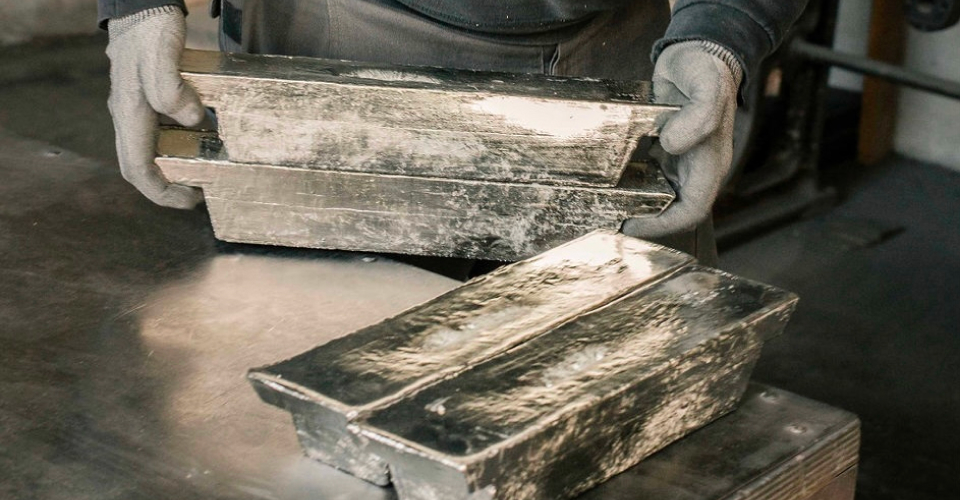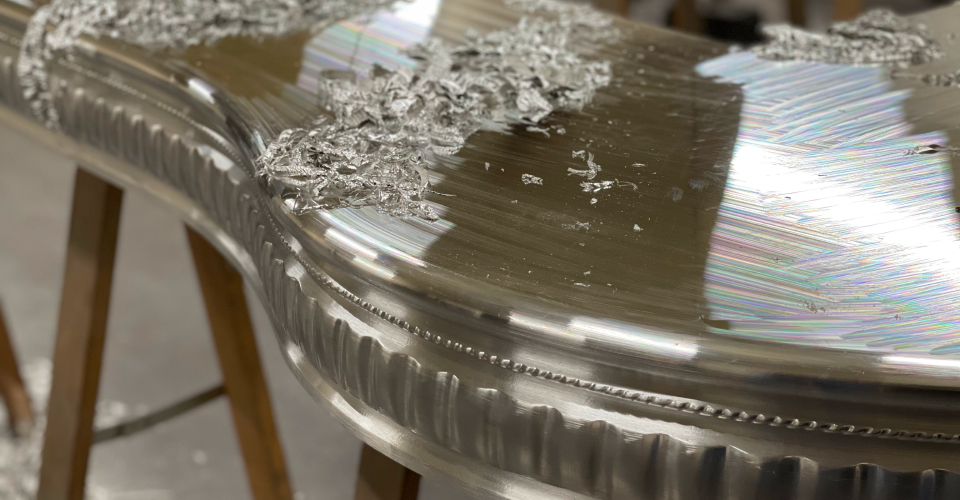Pewter

Manufacturing pewter
The pewter we use rhymes with longevity, warmth, aesthetics and easy maintenance.
We receive pewter ingots that we smelt in a 210°C hot furnace. To make edge profiles, we smelt pewter in vintage cast iron molds. Most date from 1870 to 1930.
We are also able to make a custom-made edge profile.
We format pewter slabs on a wooden chassis
(30 or 2x18 mm CP). Slab and edge profile are then welded together, then scratched, sanded down and curled by hand. Everything is artisanal and done by hand.
Its history
Pewter is a precious metal with a history dating back to Antiquity. It was used by many antique civilizations, including the Egyptians, the Greeks and the Romans. They mainly used it to make kitchen utensils, ornaments and coins.
Its usage lasted over eras, and became a key element in modern industry, including to weld, coat and to make metal alloys.
The use of pewter was important in international trade, as for centuries it was one of the most sought-after precious metals. To this day, pewter is widely used in many industries. It ranks fourth in the precious metal list.


Specific features
The pewter we use complies with EU and US food hygiene norms. It is naturally antibacterial and antiseptic. Pewter is food graded and non-oxidizable, unlike zinc which is non-food graded.
Our pewter is imported from Indonesia. During the early XXth century, countertops were made of a 60% pewter and 40% lead. Nicknamed ‘Zinc’, those countertops were nonetheless made of pewter and were called that way because of a distortion of the word ‘Zinn’ which means pewter in German.
In 1941, the French State allowed the German occupier to requisition precious metals to help in the industrial development of Germany. Pewter was separated from lead to then be used in the early days of electronics. Lead was used in the armament war industry.
Pewter or Zinc ?
| Le zinc | Pewter | |
|---|---|---|
| characteristics | Oxidizable Non-food-safe | Non-oxidizable Food-safe Antibacterial Antiseptic |
| welds | Visible | Non-apparent |
| robustness longevity | + + | +++ +++ |
| color | Light gray, Zinc blue Can darken over time | Light gray, Patina over time |
| repairs | + | +++ More flexible for Any repair or modification |
| RESISTANCE TO AGGRESSIVE LIQUIDS | + Reacts, forms salts and hydrogen | +++ Reacts slowly with acids |
| ease of maintenance | + | +++ |
| cost | € | €€€ |
Maintenance
Pewter is a malleable and reasonably ductile grey metal. It is naturally antiseptic and antibacterial.
A pewter countertop is the easiest surface to clean.
Your countertop will very slightly change color and take a patina over time. Pewter is a non-corrosive metal when exposed either to salt or freshwater. Your countertop should be cleaned daily using a slightly humid soft rag or a dishcloth (no detergent is needed). We recommend that you use our soap ‘Le Chardonnet’ every two weeks. This cleaning product is also a 100 percent natural. It maintains your countertop, cleans it and brightens it up.

